Crowds cheered. Music played. Lights danced across the tent. And then, a dog dashed into the spotlight, balanced on a ball, or leapt through hoops of fire.
For decades, dogs weren’t just companions—they were performers. Circus life was demanding. It wasn’t about tricks. It was about timing, courage, and precision in front of hundreds. These dogs didn’t have social media or fancy collars.
But they had presence. The kind that stopped you mid-bite of popcorn and made you forget everything else. What made these dogs so special wasn’t just what they did—it was how perfectly they did it.
There was a reason trainers kept choosing the same types again and again. Not for fame. Not for fluff. But because they delivered every single time.
Now, behind the curtain, we revisit the breeds that earned their place in circus history—step by step, trick by trick. Let’s begin where the spotlight once burned brightest.
Dog Breeds Trained for Circus Acts
1. Labrador Retriever
Labrador Retrievers stand out for their ability to break complex sequences into smaller tasks and master them quickly. Their focus during training sessions reduces repetition and sharpens timing. This makes them an ideal choice when consistency is critical in front of a live audience.
Confidence in Noisy Settings
They perform seamlessly amid the music, lights, and unpredictable sounds of a packed tent. Their steady temperament keeps them engaged even when distractions arise mid-act. Such confidence helps maintain the flow of a show without unnecessary pauses or errors.
Strong Bond With Handlers
Labradors thrive on interaction that strengthens trust, creating smooth communication during demanding routines, as per Britannica. The subtle signals between dog and trainer become nearly invisible to spectators. This quiet teamwork allows them to perform tricks that seem effortless.
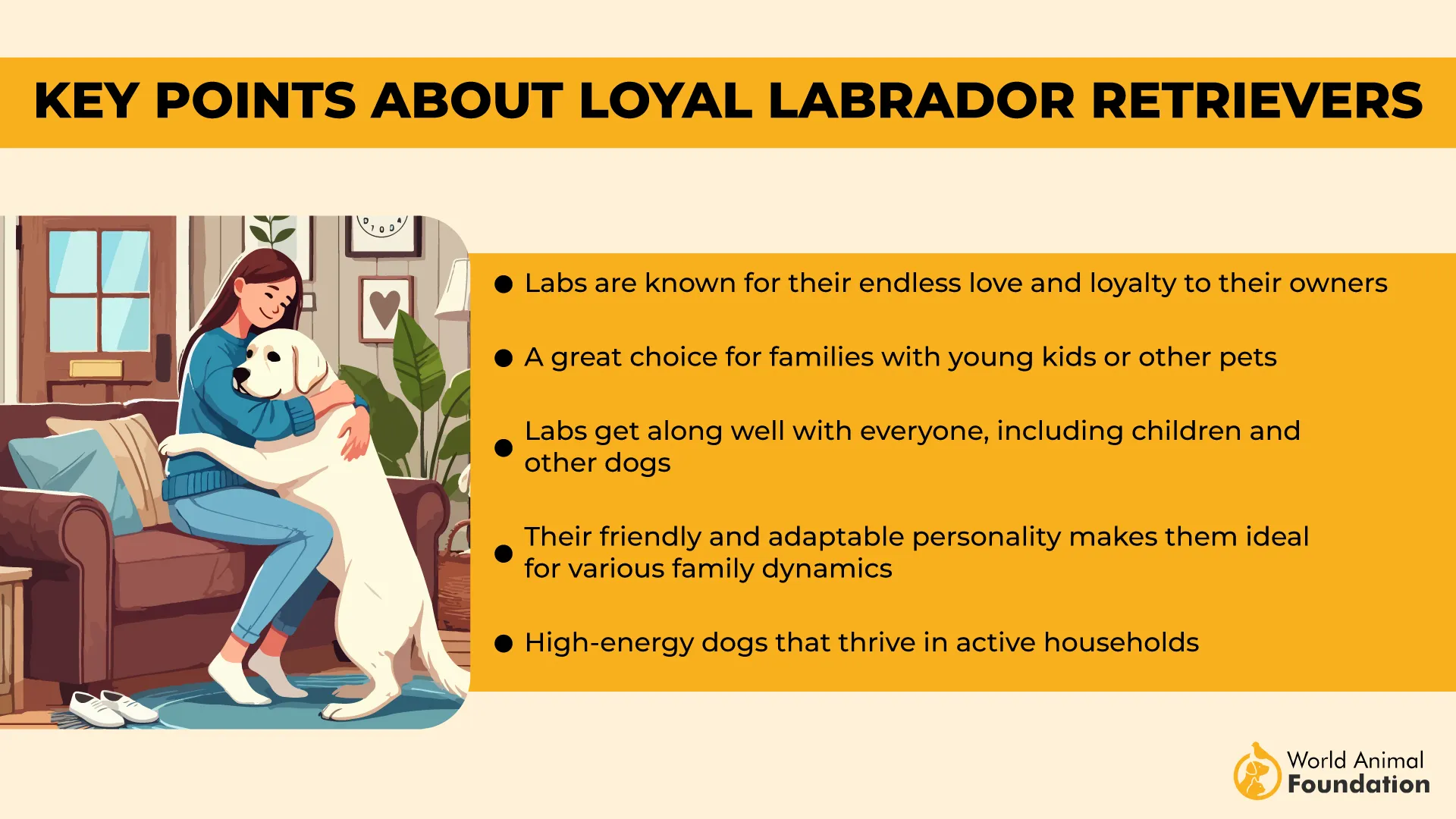
Highly Regarded in Performance Circuits
Across generations, Labradors have earned their place among well-trained circus dogs known for reliability. Their balance of intelligence and enthusiasm helps them adapt to evolving acts. It’s that dependable energy that makes them memorable in both traditional and modern performances.
2. Boxer
Boxers bring a unique physical agility that suits fast-paced circus routines. Their spring-loaded movement helps them clear hurdles and navigate platforms with style. This raw athleticism keeps performances exciting without relying on props alone.
Focused During Complex Sequences
Boxers stay alert and engaged, even when routines require split-second adjustments, as mentioned in PetMD. Their sharp responses allow handlers to modify acts mid-show without losing rhythm. This responsiveness is why they’re favored when timing must stay tight.
Balance of Strength and Sensitivity
They combine powerful build with an ability to read their trainer’s cues closely. It’s this sensitivity that makes them excel when routines involve multiple animals moving together. Boxers adjust positioning naturally to stay in sync without disrupting others.
Eager Problem-Solvers
Boxers are naturally smart, showing a knack for interpreting tasks beyond basic commands. They connect sequences such as leap, turn, and walk through without visible prompting. Their ability to read patterns keeps acts fluid, even under stage lights and noise.
3. Golden Retriever
Golden Retrievers have an exceptional sense of balance that makes them natural performers on unstable props. They adjust weight and pace precisely on seesaws or narrow beams. This allows trainers to introduce more complex stunts involving motion.
Natural Enthusiasm for Dynamic Acts
Their eagerness shines during fast-paced routines where timing matters. Golden Retrievers can jump through hoops in sequence without hesitation or misstep. That energy translates into routines that feel vibrant and polished to the audience.
Gentle Presence in Interactive Acts
These dogs work well in scenes involving crowd participation because of their calm approach. When paired with children during family-friendly segments, their gentle nature keeps the act safe and engaging. This makes them a favorite in productions that encourage audience involvement.
Joyful Connection With the Crowd
Golden Retrievers seem to sense the mood of the tent and adjust their energy accordingly, as mentioned in PDSA. A well-timed tilt of the head or playful stance can draw a spontaneous laugh from the audience. This intuitive charm helps create memorable moments that go beyond the stunt itself.
4. Australian Shepherd
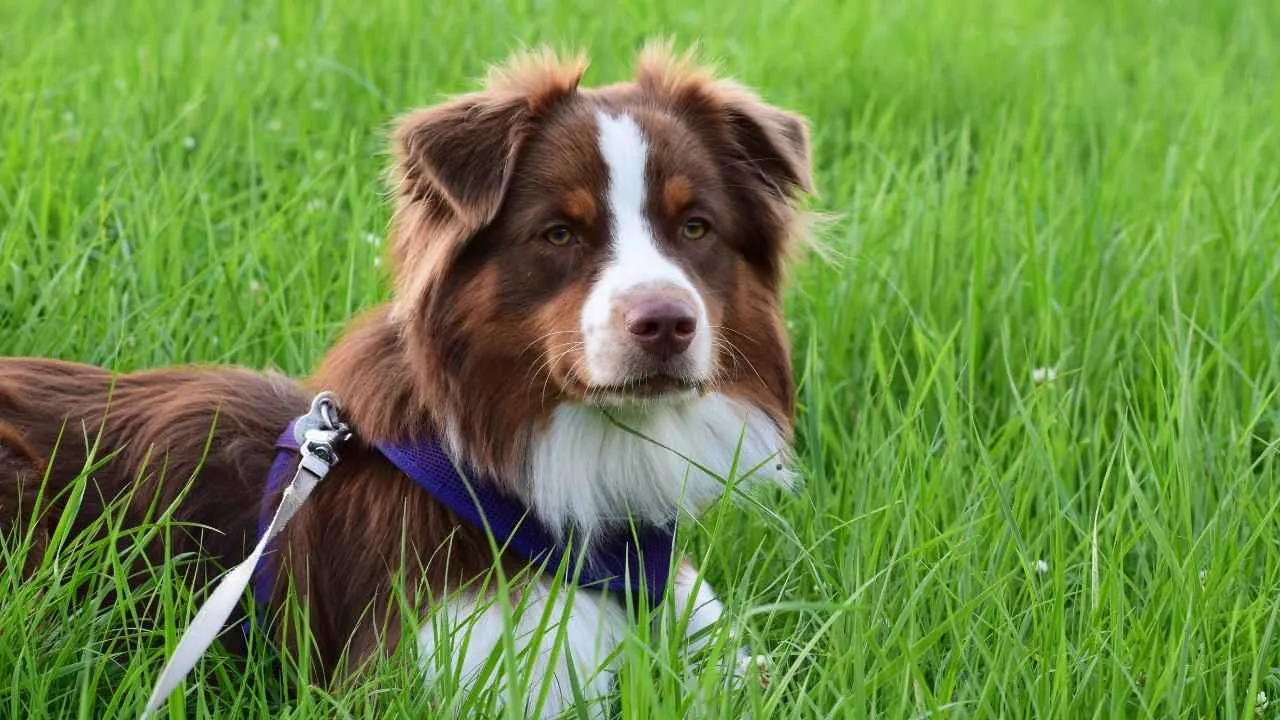
Australian Shepherds excel at learning coordinated moves that demand precise paw placement and timing. Their agility allows for intricate routines involving hoops, balance beams, or ladders. The complexity they can handle often exceeds what’s expected of most performance dogs.
Sharp Response to Signals
These dogs have a remarkable ability to lock onto a trainer’s cues even from a distance or during fast sequences. Whether it’s a whispered command or a subtle hand gesture, they adjust instantly. That responsiveness ensures smooth transitions between tricks on stage.
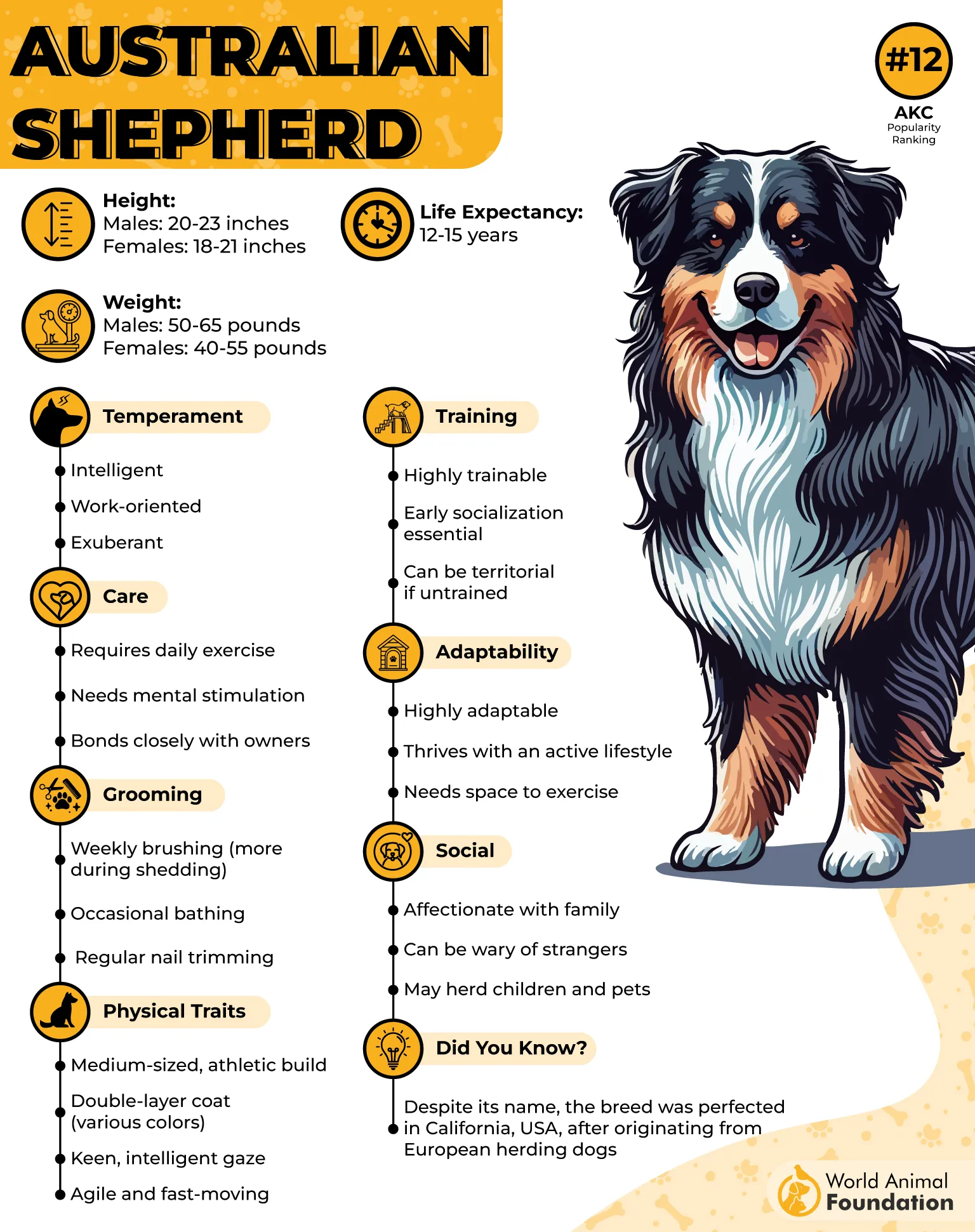
Enthusiasm for Fast-Paced Acts
They thrive on energetic routines, seamlessly shifting between actions without hesitation. Their stamina keeps them sharp through long performances with rapid changes. It’s this drive that makes them a favorite in acts designed to surprise and captivate crowds.
Control During Precision Tasks
Australian Shepherds can sit on cue at specific markers even when excitement peaks in the ring. Their focus keeps them steady amid applause and flashing lights. That level of discipline impresses any person watching closely from the audience or sidelines.
5. Pembroke Welsh Corgi
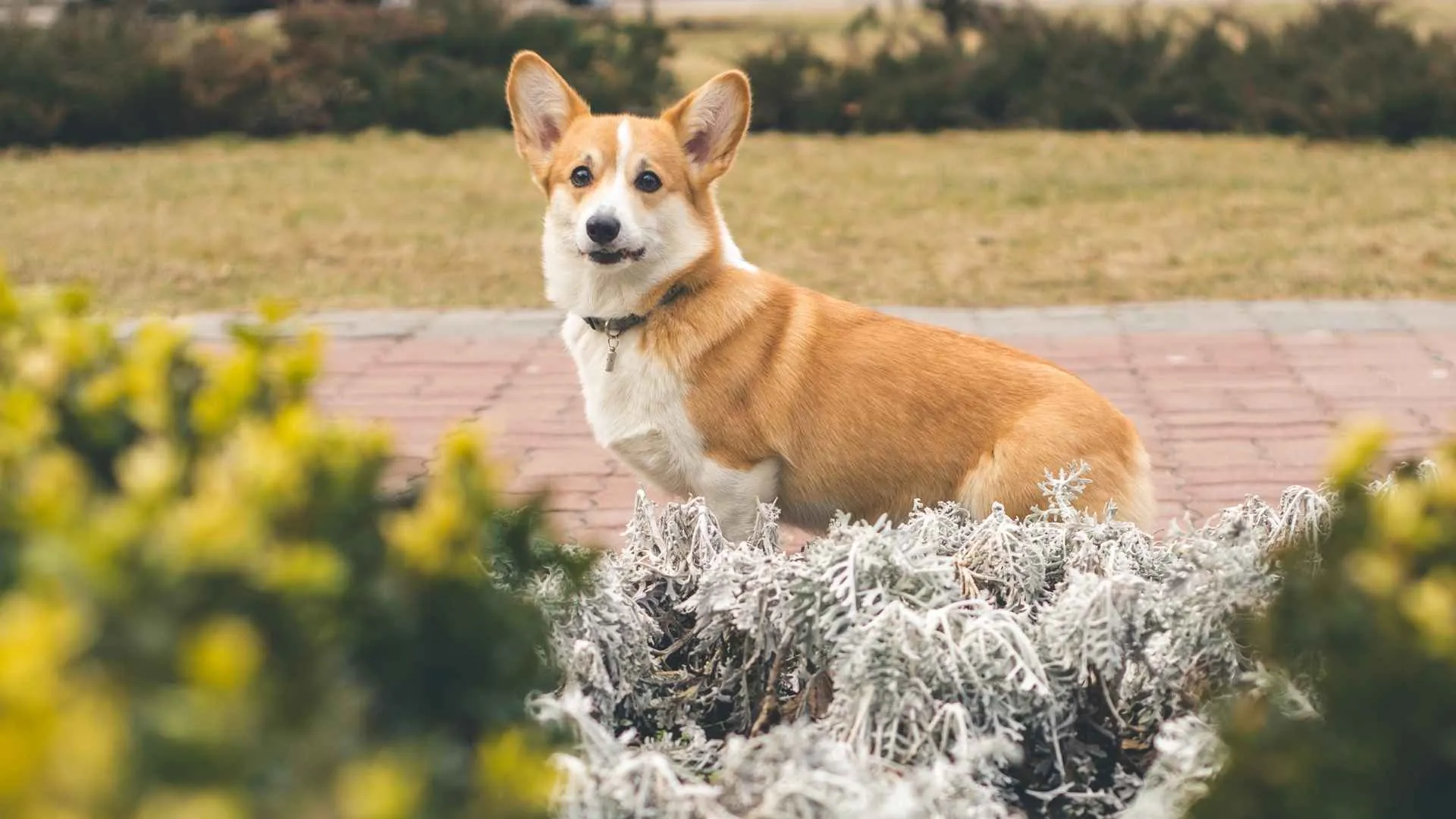
Their low center of gravity allows Corgis to balance on narrow beams and rolling platforms with surprising ease. That body structure gives them an edge in acts requiring stability and quick directional shifts. They’re often used in segments where agility meets visual comedy.
Eye Contact and Timing
Corgis excel in reading micro-cues from a trainer’s face or hands, making them responsive even without spoken commands. Their timing aligns beautifully with rhythm-based performances. It’s the kind of precision that comes from sharp visual focus, not just repetition.
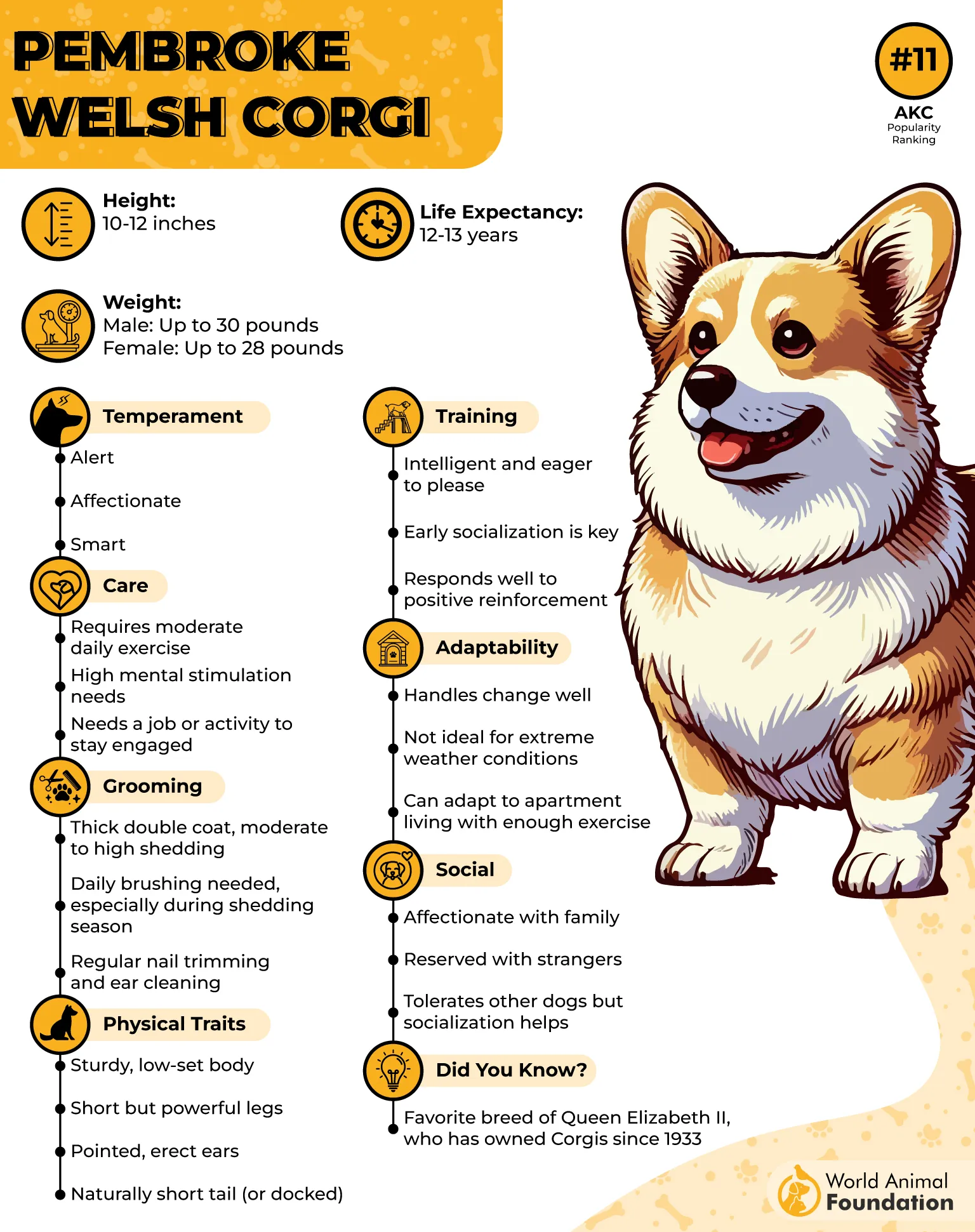
Fast Reinforcement Response
They respond exceptionally well to immediate feedback, especially when food-motivated, as Orvis claims. When paired with the right treat, their ability to link cues with rewards becomes almost reflexive. This responsiveness shortens the time it takes to teach complex patterns.
Expressive Crowd Engagement
Corgis are natural scene-stealers thanks to their expressive faces and animated movement. That personality translates well on stage, especially in comedy or themed skits. Their loyal connection with trainers adds depth to every act, keeping the routine engaging for both the audience and the dog.
6. Jack Russell Terrier
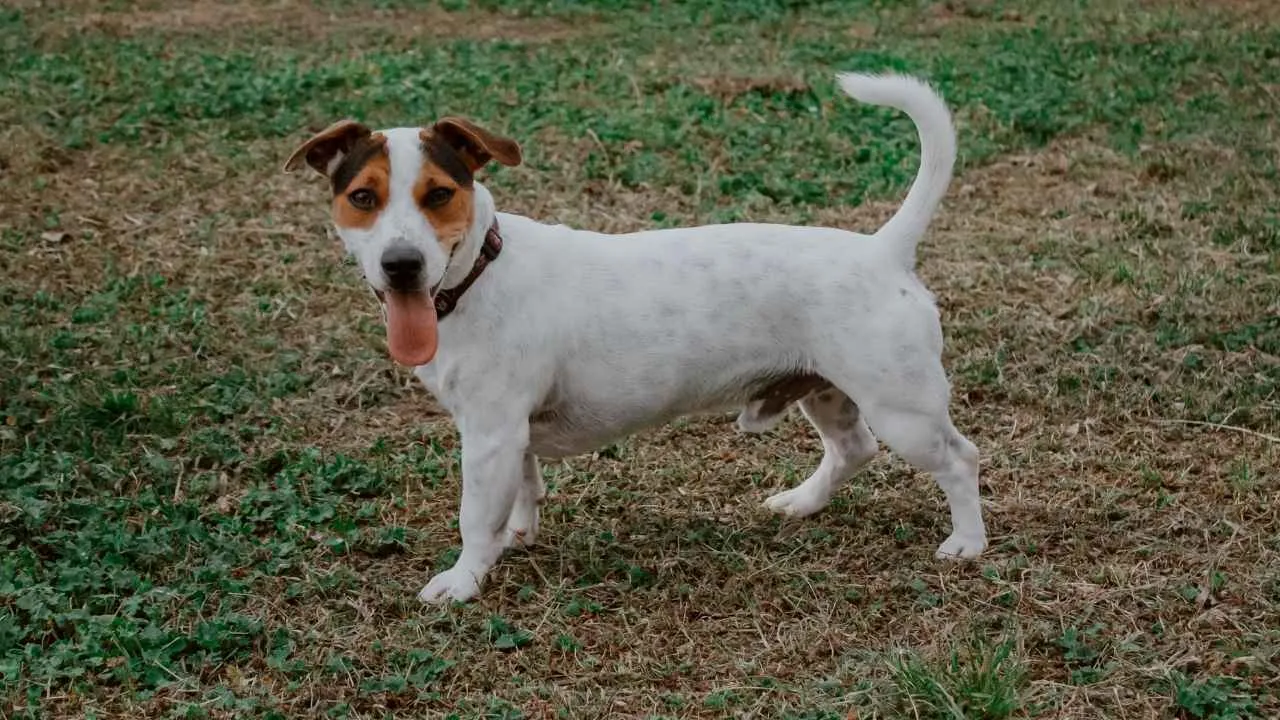
Jack Russell Terriers are known for launching into jumps, spins, and mid-air stunts with precision and enthusiasm. Trainers harness this energy into short bursts, ideal for timed cues. It’s their ability to switch from stillness to action that adds visual impact to fast-paced acts.
High Retention of Sequences
These dogs don’t just remember commands—they retain complex sequences after fewer repetitions. Their intelligent nature allows them to link cues with minimal reinforcement. That fast processing makes them suitable for layered routines that evolve over time.
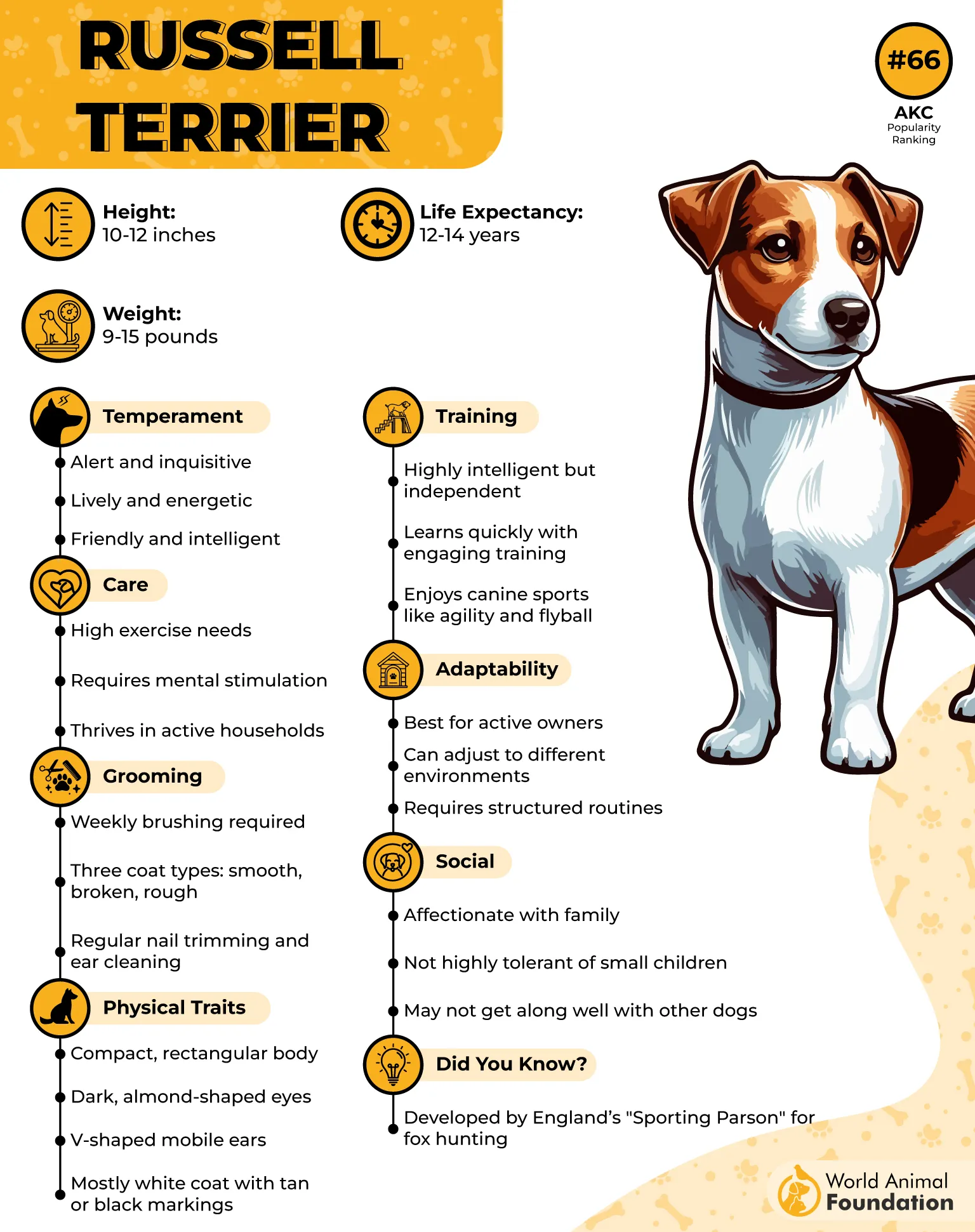
Compact Size, Bigger Movement
Their small build makes tightrope runs, barrel rolls, and hoop dives more fluid in smaller performance rings. This physical difference gives them an edge in acts designed for space efficiency without compromising speed or clarity. Their movements are sharp and consistent, even at height.
Sharp Focus in High-Stimulus Zones
Despite the chaos backstage, Jack Russells stay zeroed in on their trainer’s tone, gestures, and timing. Their sensory filtering allows high-quality performances even under pressure. That consistent attention lets trainers adjust mid-act without throwing the dog off rhythm.
7. French Bulldog
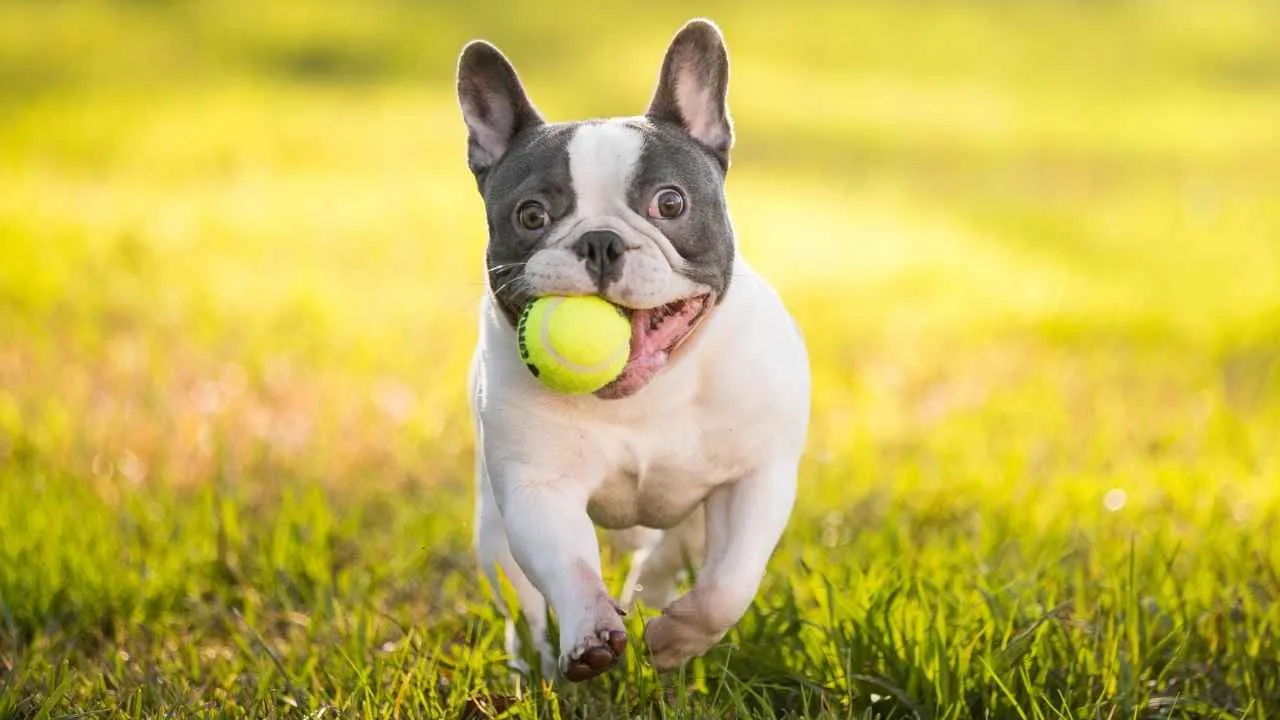
French Bulldogs have a knack for drawing attention with their expressive faces and comedic timing. Trainers often leverage these traits to create humorous segments that require minimal verbal direction. Their ability to read audience energy makes them valuable for light-hearted, visual acts.
Strong Response to Gesture Cues
They respond more consistently to visual hand signals than extended commands, which works well in choreographed skits. In rehearsals, their recall improves through repetition of spatial setups rather than vocal cues. This method keeps the dog focused without overstimulation.
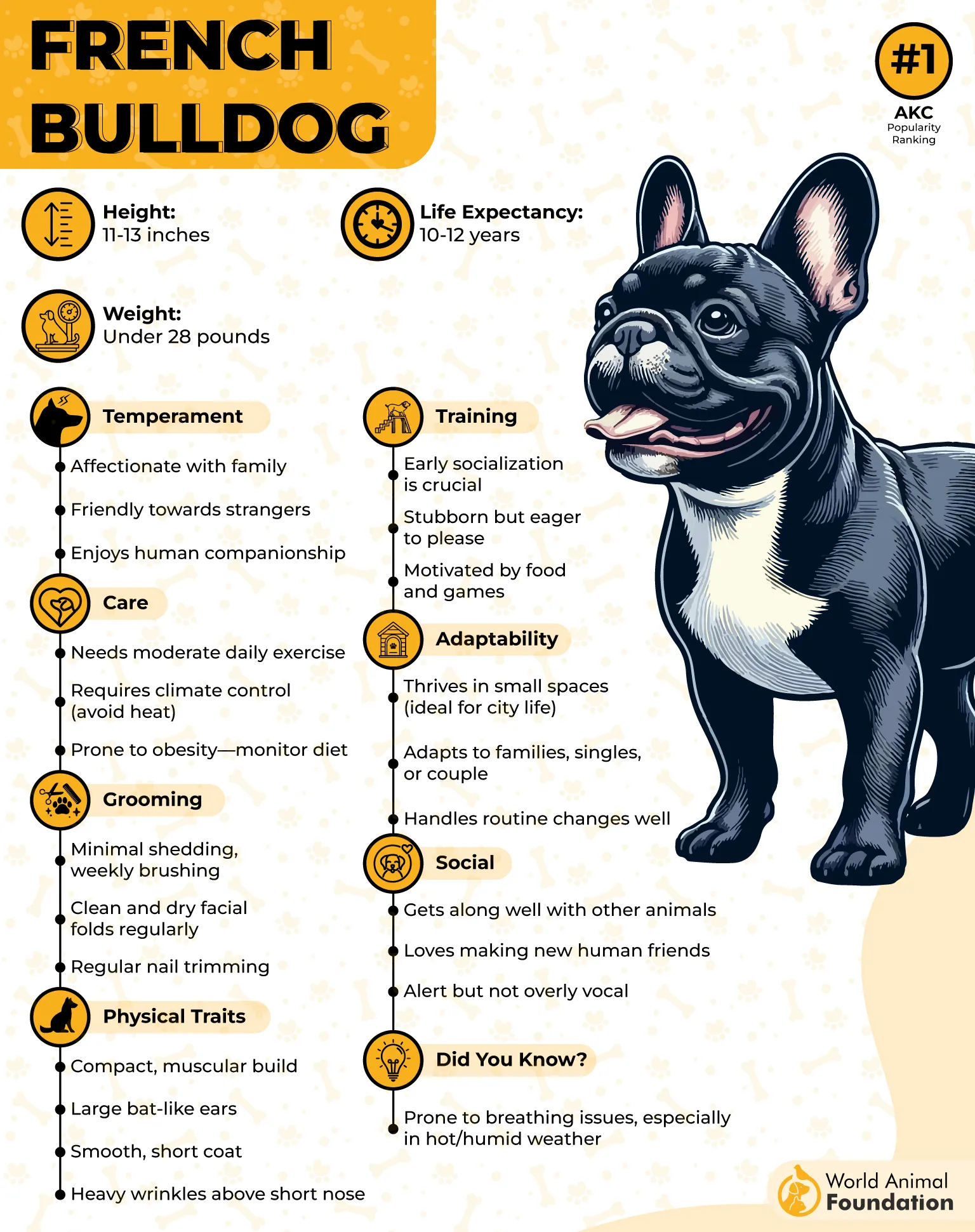
Compact Builds for Stage Work
Their small, sturdy frame allows for lifts, platforms, and balance-based routines without risk to either partner. Acts involving low ramps, baskets, or tight loops fit their physicality perfectly. They are often introduced early in circus training because of how manageable they are on stage.
Loyal to One or Two Handlers
French Bulldogs bond deeply with those who’ve consistently owned and trained them. That loyalty strengthens cooperation during complex or timed performances. It’s also what makes them reliable for fetching props or delivering items during cue-based sequences.
8. Dalmatian
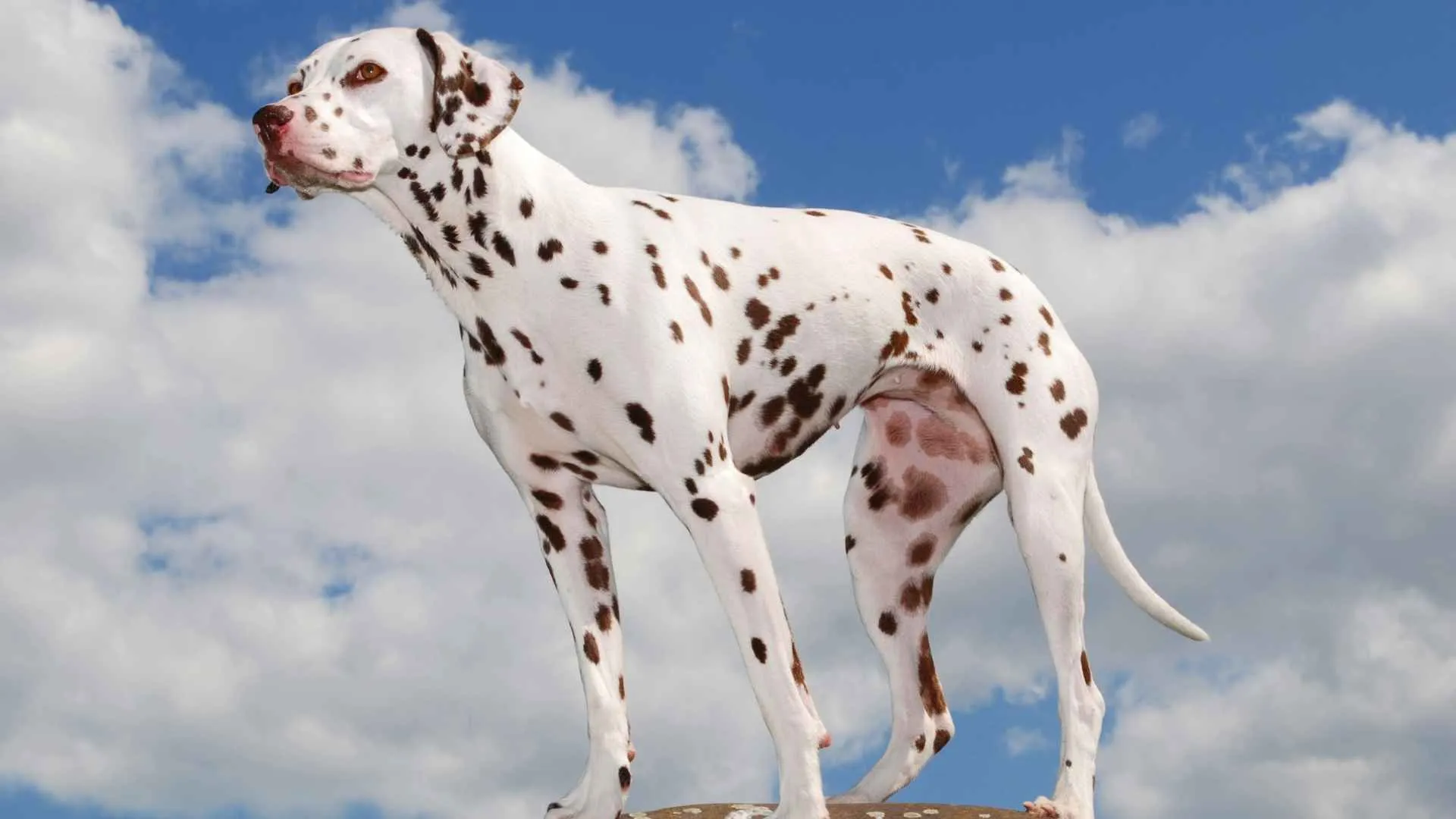
Dalmatians have a natural sync with musical beats, a skill sharpened through years of exposure in traditional traveling shows. Their step precision often mirrors the cadence of the music without needing constant cues. This built-in sense of rhythm gives choreographed acts a polished finish.
Endurance for Long Routines
Their background as carriage dogs shaped them for stamina-intensive performances where routines stretch beyond short sequences. They maintain sharp movement through multiple segments without lagging. This makes them ideal for back-to-back performances across a show’s runtime.
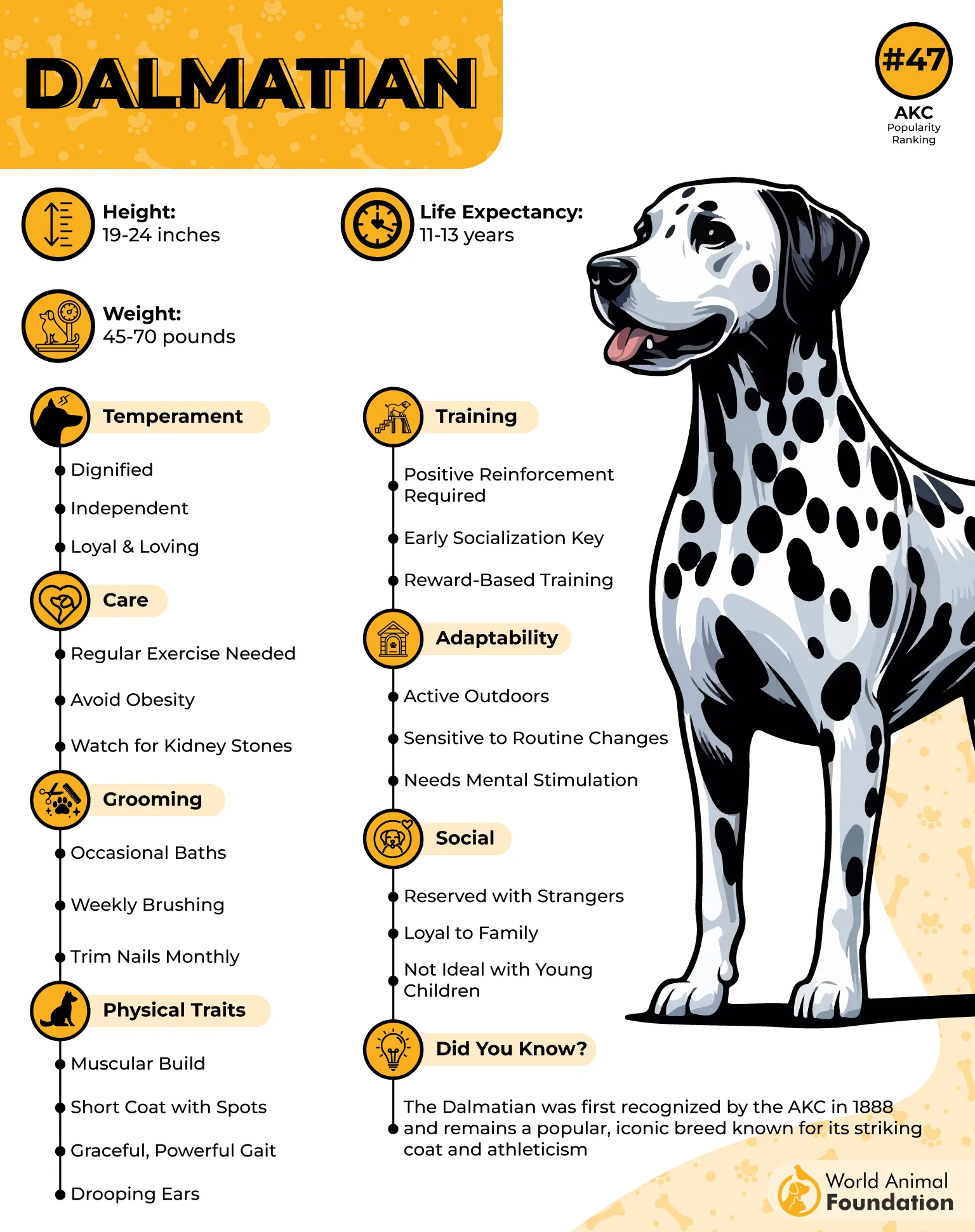
Visually Engaging on Stage
Their coat pattern isn’t just iconic—it adds visual flair to movement-heavy acts under the spotlight. When jumping hoops or weaving through ladders, their contrast helps accentuate each motion for the audience. The effect is both aesthetic and functional in live productions.
Highly Trainable and Responsive
This breed’s attention to physical gestures over vocal commands allows smoother interaction during fast-paced transitions. Their agile build supports balance-based tricks with fewer missteps. Dalmatians are among the most versatile performers where visual timing and pattern-based movement are required.
9. Pug
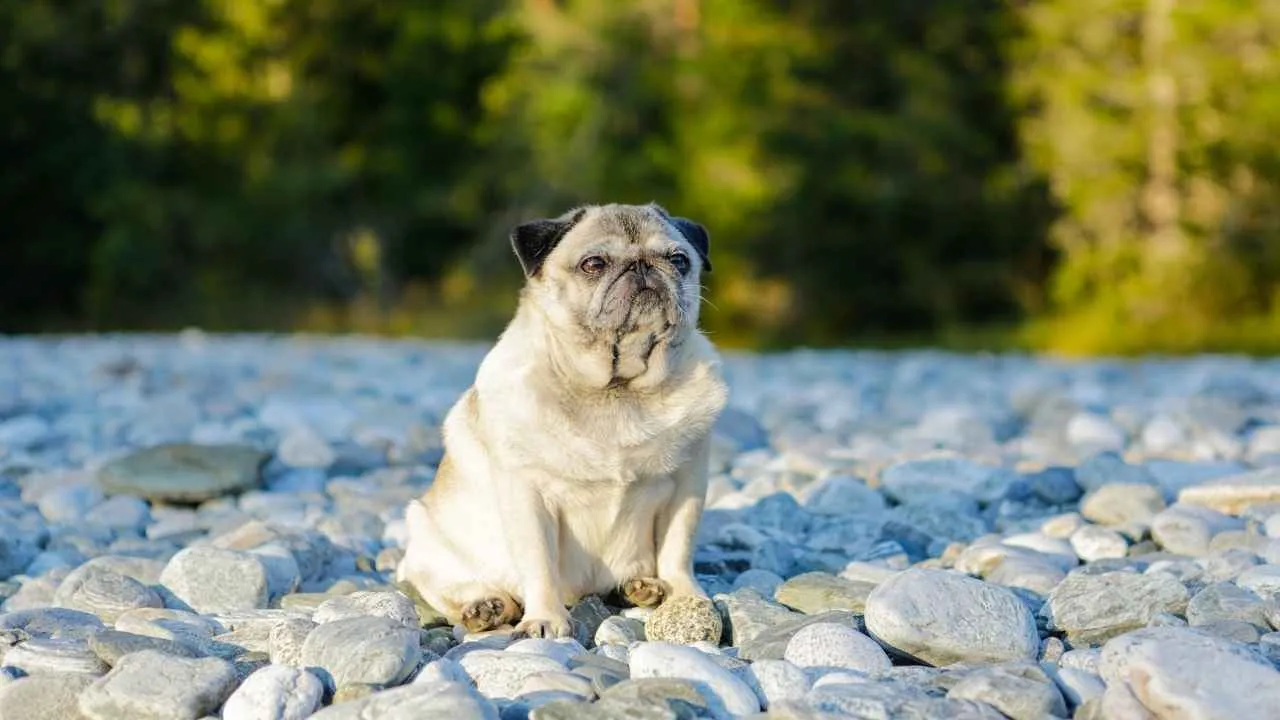
Pugs rely heavily on exaggerated facial expressions that land well with a live audience. Their wide-eyed reactions and tilted heads add a natural comedic rhythm to acts. Trainers often build skits around these cues to create intentional moments of laughter.
Movement Tailored to Their Build
Instead of jumping through high hoops, Pugs excel at close-range routines that use props and visual cues. Their compact size works well for obstacle layouts set at floor level. Clown sequences and synchronized walks often feature them for this very reason.
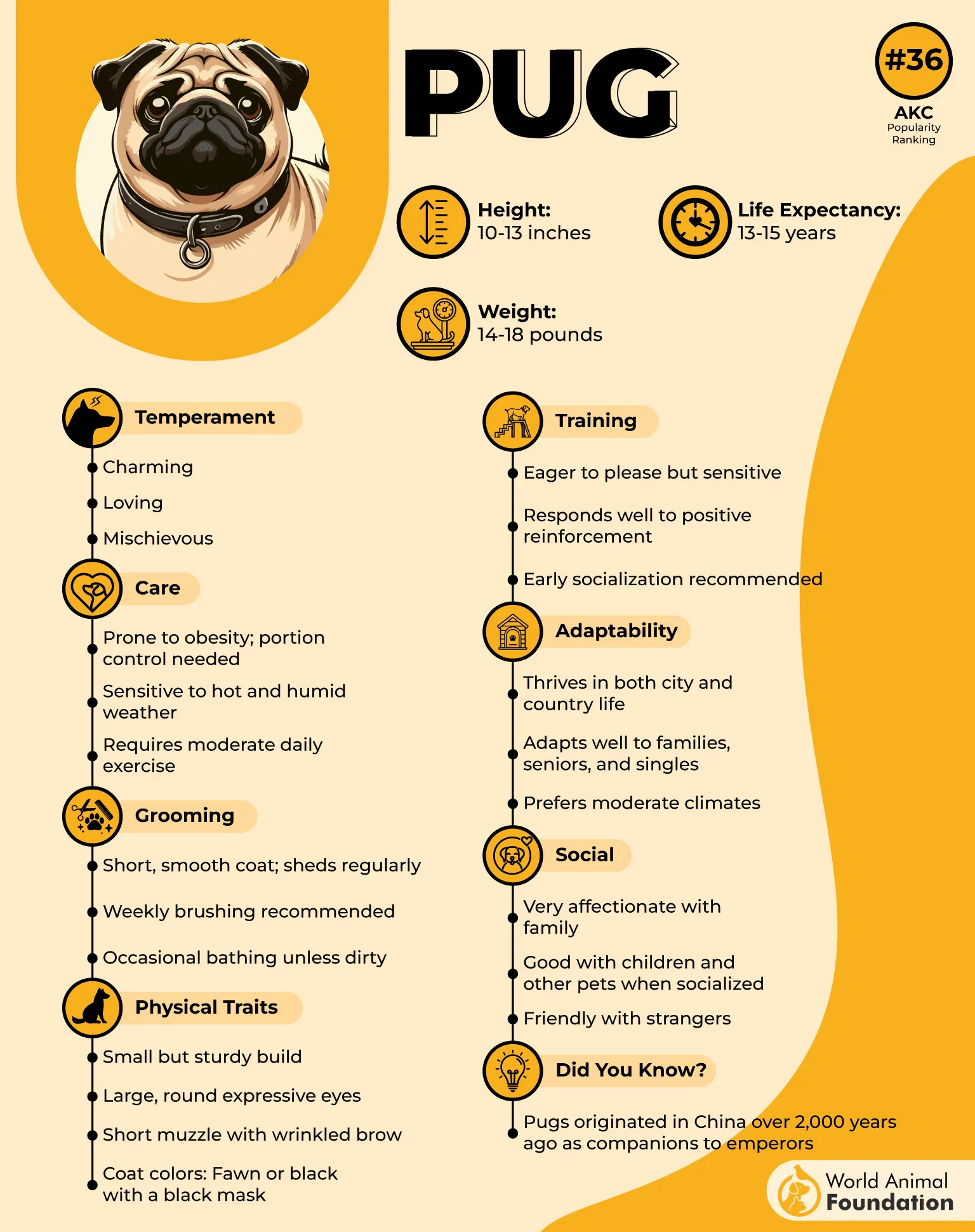
Consistency Through Routine
They respond well to repetition-based drills that are kept short and playful throughout the training course. Their memory shines when movements are broken into short segments with consistent timing. These patterns help reduce mistakes during live shows.
Affection-Driven Motivation
Food isn’t the only motivator—Pugs are highly responsive to touch and voice tone. That emotional tuning is why they’re often chosen for sweet and humorous scenes requiring gentle timing. Their attachment to handlers creates visible chemistry that resonates with the crowd.
10. Cocker Spaniel

Cocker Spaniels respond exceptionally well to rhythmic patterns—claps, drum beats, or foot taps. Their ability to sync movements with timed signals makes them ideal for synchronized routines. Trainers often incorporate beats to guide spins, bows, and short bursts of footwork.
Emotional Responsiveness in Acts
This breed detects subtle emotional changes in its handlers during performances. A slight shift in tone or posture is enough to adjust their behavior mid-routine. That sensitivity allows them to recover from missed cues without disrupting the flow of the act.
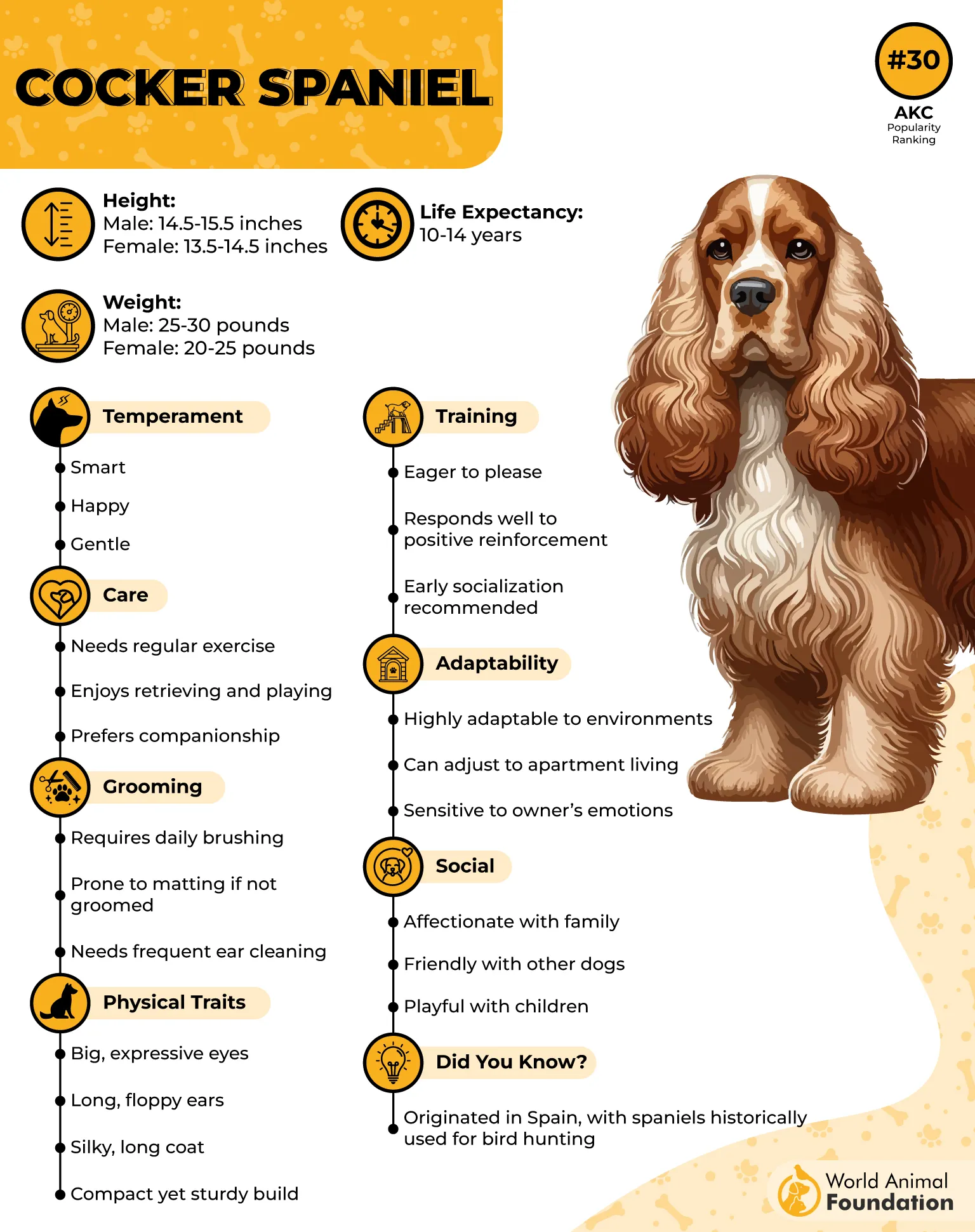
Smooth Body Mechanics
Their compact frame, fluid gait, and strong back legs create elegant movement on props like balance beams or tight platforms. They pivot and leap with ease, making transitions look seamless under stage lighting. These physical traits help them continue multi-step sequences smoothly.
Deep-Rooted Trainability
Generations of selective breeding for companionship have resulted in a dog that’s eager to please and quick to adapt. Cocker Spaniels tend to retain learned behaviors even in high-pressure settings. This makes them an underrated but effective choice among performing breeds.
Conclusion
Long before dogs were internet-famous, some were stealing the show under circus lights. The tent would fill with gasps and cheers—not for a lion or trapeze artist, but for a dog dancing on its hind legs, flipping through hoops, or pushing tiny carts across the stage. It wasn’t just cute. It was coordinated, clever, and almost unbelievable.
These dogs weren’t just trained—they were built for performance. Trainers didn’t gamble with just any breed. They picked the ones that could handle noise, crowds, and pressure. Breeds that listened fast, moved faster, and never missed a beat. Behind every perfect trick was patience, repetition, and a bond between dog and handler that the audience never saw.
We’re stepping back into that world—into the sawdust and spotlight—to meet the performers who made the ring come alive. Not with barked commands, but with talent that lit up the tent. Let’s meet the ones that truly earned their applause.


